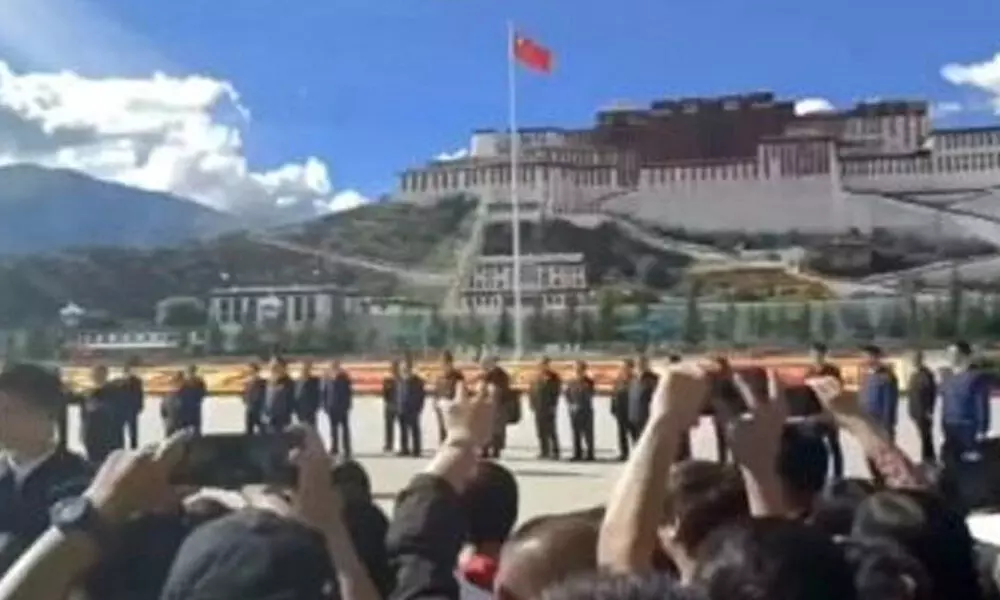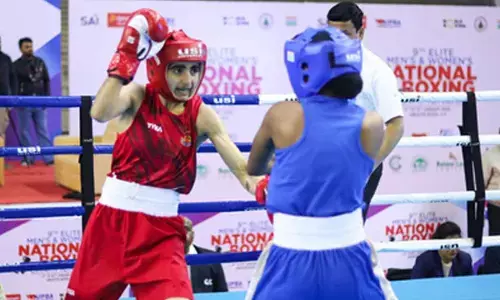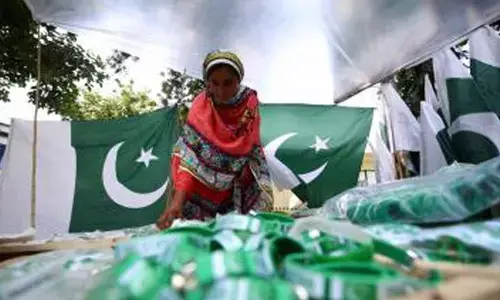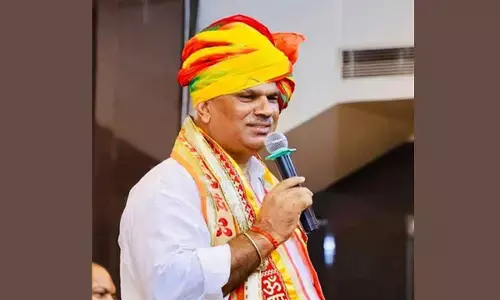Xi Jinping's recent visit to Tibet and its impact

Xi Jinping’s recent visit to Tibet and its impact
Chinese President Xi Jinping was on a surprise 'inspection tour' of central and southern Tibet from July 21-23. Xi, who had succeeded Hu Jintao in 2012, had visited Tibet as Vice-President in 2011
Chinese President Xi Jinping was on a surprise 'inspection tour' of central and southern Tibet from July 21-23. Xi, who had succeeded Hu Jintao in 2012, had visited Tibet as Vice-President in 2011. He went to Lhasa after a gap of ten years, when he came as head of the Chinese governments delegation to mark the 60th anniversary of the 17 Point Agreement. Hence, the recent tour was therefore his first in central Tibet in nearly a decade. However less than two months ago, Xi went to Gangcha county in Haibei Tibetan Autonomous Prefecture (TAP) in Qinghai province.
For China, it has to be seen in the context of the Chinese Communist Party's (CCP) 100th anniversary and the 70th anniversary of the controversial 17 Point Agreement, a document which as falsely claimed by China marks its "peaceful liberation of Tibet". However, the Dalai Lama has renounced it as an agreement which was made under duress.
President Xi had first landed at Mainling airport in Nyingchi, southeast Tibet, located not far from the Indian state of Arunachal Pradesh, on July 21. He also addressed a public gathering there. Ten years ago when Xi had visited to mark the 60th anniversary of the 17 Point Agreement, he had gone to Lhasa first. However, this time, he came to meet the people in Nyingchi first and told them that not a single ethnic group must be left behind in the efforts to fully build a modern socialist China. On the morning of July 22, Xi came to Nyingchi Railway Station to learn about the overall planning of the Sichuan-Tibet Railway and the construction and operation of the Lhasa-Nyingchi section, and then took a train ride to Lhasa.
On July 22, Xi was reported to have visited the Drepung Monastery, Barkhor Street and the Potala Palace square in Lhasa. Hr also addressed a gathering in front of the Potala Palace in Lhasa, where he said that "as long as we follow the Communist Party and long as we stick to the part of socialism with the Chinese characteristics, we will surely realize the great rejuvenation of the Chinese nation as planned". This should be seen in the context of his call for Tibetan Buddhism to be adapted to socialist society under the ongoing Sinicization campaign.
Significantly, Xi met with the representatives of the Tibet Military Command of the People's Liberation Army (PLA) on the last day of his visit. On July 23, Xi called on ethnic Tibetans and other minority groups to help defend the country. He stressed that the local troops should fully strengthen the work of training soldiers and war preparation, and contributes positive strength to promote the long-term stability and prosperity of Tibet.
No report by Chinese state media
According to the various news media including Chinese and Tibetan news portals like International Campaign for Tibet (ICT) and others, Xi made an unannounced visit to Tibet. While heavy security is expected for a visit by the Chinese President anywhere, it is highly unusual that even Chinese state media has not reported about his visit to Lhasa and Nyingchi, even though after two or three days since he arrived.
A surprise visit by the Chinese President to Tibet
There were monitoring movements and unusual activities before Xi's visit to Tibet, which further indicated the visit of an important leader. eople also reported receiving calls from security officials and checking on their activities for no apparent reason. Roads in several sections of Lhasa were also blocked, and the city authorities had announced the banning of drones or kites in Lhasa from July 21. Both Nyingchi and Lhasa were put under a near curfew like lockdown during his visit. People except a select crowd which was brought to greet him with well-orchestrated costume dances and handshakes in front of China's national TV cameras in both cities were ordered to stay indoors. For the whole time, Xi was in Tibet, the streets remained under physical control of the Public Security Bureau (PSB) and under the close scrutiny of thousands of security cameras.
Though the visit was kept a State secret, videos started circulating on social media on July 22 in the evening. Video clips which were shared on the Chinese social media on July 22, showed the President addressing the people in Nyingchi and coming out of a shop in the Barkhor area in Lhasa. The President was also seen giving remarks to the public while facing the 'Monument to the Peaceful Liberation of Tibet' in front of the Potala Palace, a traditional winter residence of the Dalai Lama.
Later, The People's Daily stated the objectives of the visit "to implement the party's strategy for governing Tibet in the new era and write a new chapter in long-term stability and high-quality development of the snow-covered plateau". This refers to the 7th Work Forum held in August 2020 which defined the development policies for Tibet for the five next years, particularly the Sinicisation of Tibetan Buddhism.
The way Xi's visit was reported to the Tibetan people and the world community by the Chinese media two days after he landed in Nyingchi and then Lhasa, exposed the hollowness of China's persistent claims about Tibet being an "integral and inseparable part of China" or that the Tibetans are "happy" and "thankful" to China for "liberation" from the Dalai Lama's "feudal" rule. Although in his calibrated speeches during his two day visit to Tibet, Xi tried to send the message to the world that Tibet is under full control of China as "an integral part of China", yet he failed miserably in hiding his fear of ordinary Tibetan people's anger.
Jinping's visit to Tibet: How can it impact India?
The visit by the President came a month after China had inaugurated its first electric train service in Tibet between capital Lhasa and Nyingchi City, a week before the ruling CCP had celebrated its 100th birthday on July 1. The inauguration of the bullet train near India's border had already become an issue of concern for India. The train connects Nyingchi which is a prefecture-level city of Medog county which is adjacent to the Arunachal Pradesh border which China claims as part of south Tibet, which has always been firmly rejected by the Indian government.
His desperation about the new railway line and other military preparations against India in Tibet too has exposed his anxieties and frustration in dealing with India. This first ever visit of a supreme Chinese leader to demonstrate his interest in the proposed mega hydro project on the Brahmaputra is also a no less an expression of his frustration at and arrogance against India.
Even though India's policy on Tibet has been mindful of Chinese sensibilities, and recognised Tibet as part of China, with the recent stand-off between the two countries, India's stand on Tibet took a U-turn. The strategic significance of Xi's visit in the backdrop of the ongoing face-off between Indian and Chinese armies across the Ladakh border has been underlined in Indian media reports.
It was certainly an important visit, and the policies/decisions taken in August during the 7th Work Forum will be implemented with more vigour after Xi's visit. It does not augur well for the Tibetans and India.
















